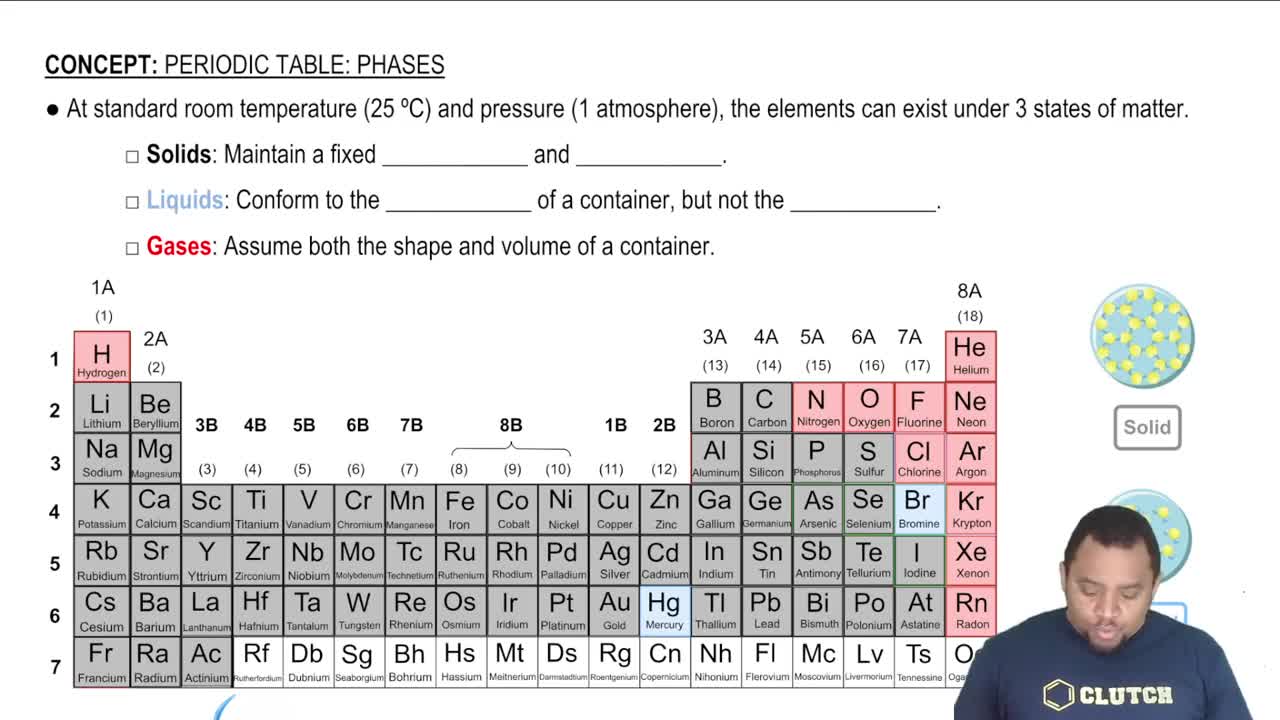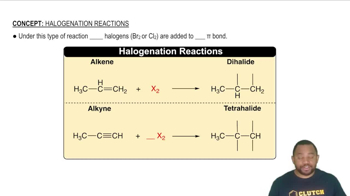Here are the essential concepts you must grasp in order to answer the question correctly.
States of Matter and Molecular Interactions
The state of a substance (solid, liquid, gas) at room temperature is influenced by intermolecular forces and molecular size. Iodine (I₂) is a solid due to stronger London dispersion forces from its larger electron cloud, while bromine (Br₂) is a liquid with moderate forces. Chlorine (Cl₂) and fluorine (F₂), being smaller, have weaker forces, allowing them to exist as gases at room temperature.
Recommended video:
Electrolysis and Ion Stability
Electrolysis involves breaking down compounds into their elements using electricity. Fluoride ions (F⁻) are highly stable and do not easily oxidize to form fluorine gas (F₂) during electrolysis. This is due to the high electronegativity of fluorine, which makes it energetically unfavorable to remove an electron from F⁻, preventing the formation of F₂.
Recommended video:
Intepreting the Band of Stability
Oxidizing Power of Halogens
The oxidizing power of halogens decreases down the group from fluorine to iodine. This trend is due to the increasing atomic size and decreasing electronegativity, which reduce the ability of larger halogens to attract electrons. Consequently, fluorine (F₂) is the strongest oxidizer, while iodine (I₂) is the weakest, as it is less effective at gaining electrons.
Recommended video:
 Verified step by step guidance
Verified step by step guidance

